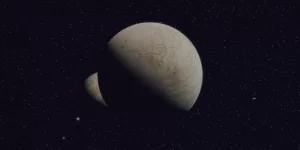Few agencies capture the imagination quite like NASA. The company has been responsible for some of the most iconic moments in human history, from the first moon landing to the launch of the Hubble Space Telescope. But what many people don’t realize is that NASA is also a great place for students to learn and grow.
Many programs and opportunities are available for students interested in STEM (science, technology, engineering, and math) disciplines. Dennis Bonnen, an education advocate, believes that NASA is a place where students can experience their classroom studies in real-life situations. If your student loves space and exploration, here are a few ways they can get involved with the agency.
Start With STEM
STEM stands for science, technology, engineering, and mathematics. All of these disciplines are important to qualify for a position at NASA. If your student is currently enrolled, make sure they take challenging classes in all four subjects.
In addition to their regular coursework, many extracurricular opportunities are available to help students get ahead. Robotics clubs, science fairs, and coding competitions are great ways for students to gain experience and pad their resumes. Organizations like Girl Scouts and Boy Scouts also offer STEM-related badges and programs to help students get started.
Attend a Space Conference
If your student is interested in learning more about space science, many conferences and symposiums are available throughout the year. These events allow students to hear from NASA scientists, engineers, and other field experts.
The annual Space Exploration Educators Conference (SEEC) is one of the most significant events for space educators. This conference is open to all educators, including teachers, homeschool parents, and after-school program leaders.
The Student Spaceflight Experiments Program (SSEP) also holds an annual conference. This event is open to students and educators participating in the SSEP program. There are also many smaller conferences and symposia held throughout the year. These events are often specific to a particular discipline or topic.
Visit a NASA Center
Suppose your student is interested in seeing what NASA scientists and engineers do daily. In that case, Dennis Bonnen recommends visiting one of the many centers around the country that offer tours and educational programs.
The Kennedy Space Center in Florida is one of the most popular options. This center offers tours of the facilities and educational programs for students of all ages. Other popular centers include the Jet Propulsion Laboratory in California and the Marshall Space Flight Center in Alabama. These centers also offer tours and educational programs.
Volunteer at a Planetarium
Many planetariums offer volunteer opportunities for students interested in astronomy. These positions usually involve giving presentations to groups of visitors or helping with events and programs.
Volunteering at a planetarium is a great way for students to learn more about astronomy and gain experience working with the public. It’s also a great way to connect with people who share their interests.
There are many planetariums located across the country. Some of the most popular include the Adler Planetarium in Chicago, Illinois, and the Rose Center for Earth and Space in New York, New York.
NASA’s STEM Program
Once your student has a firm foundation in STEM disciplines, they can start looking at programs offered explicitly by NASA. The agency provides many opportunities for students of all ages, from internships and fellowships to scholarship programs.
One popular program is the High School Aerospace Scholars (HAS) program. This program is open to high school juniors and seniors interested in learning about aerospace engineering. Participants will spend a week working with engineers and scientists at a NASA center on real-world projects.
There are also programs available for college students. The Cooperative Education Program (Co-op) provides paid opportunities for students to work at NASA centers around the country. This program is open to undergraduate and graduate students in STEM disciplines.
Agency-Wide Opportunities
In addition to specific programs, many opportunities are available for students across the agency. NASA offers paid internships for undergraduate and graduate students and fellowships for post-doctoral students. These programs allow students to work alongside NASA scientists and engineers on various projects.
There are also opportunities for students interested in non-STEM disciplines, such as communications, business, or law. These positions are essential for the agency to function and provide students with a well-rounded experience.
Help With Research Projects
If your student is interested in conducting research, there are many ways to get involved with NASA. The agency offers a variety of programs and resources that can help students get started.
The Student Collaborations Program (SCP) pairs students with NASA scientists and engineers to work on research projects. This program is open to undergraduate and graduate students in all disciplines.
The Space Grant program is another option for students interested in conducting research. This program provides funding for projects in all STEM disciplines. Space Grant programs are available in many states across the country.
The High Altitude Student Platform (HASP) program allows students to conduct experiments in near-space conditions. This program is open to undergraduate and graduate students in all disciplines.
There are also many smaller centers located around the country. These centers may not offer tours but often have public events and educational programs.
Final Thoughts
As you can see, there are many opportunities for students interested in astronomy. Students can learn more about this fascinating field by getting involved with local planetariums and museums, volunteering with NASA programs, or conducting research projects.
These experiences will not only provide valuable knowledge and skills, but they’ll also help students stand out when applying to colleges or jobs. So encourage your student to pursue their interests in astronomy, and see where it takes them.
Written by Johnny Steele








